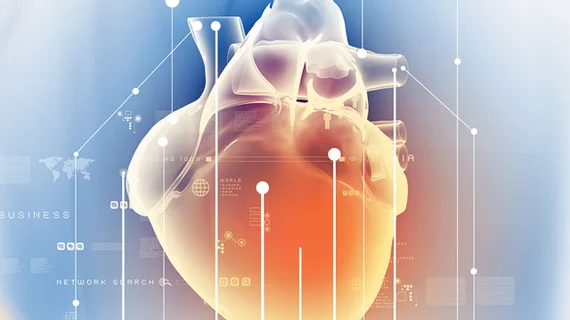Measuring 4D flow MRI during exercise offers benefits over stress echo
Cardiovascular four-dimensional MRI can measure blood flow during exercise and provides insights into right-sided heart dysfunction that is not well understood via traditional stress echocardiography.
That’s according to a team of University of Wisconsin researchers who performed 4D flow MRI in nine healthy adults during intense cardio and while at rest, sharing their findings June 18 in Radiology: Cardiothoracic Imaging. The approach accurately quantified flow in the ascending aorta (AAo) and main pulmonary artery (MPA) and was “highly” repeatable.
It did take about nine minutes to complete the scan, which would limit the approach to patients who are able to maintain stable exercise during that time period, but it’s an “important first step” to bringing the modality into real-world use, Michael Markl, PhD, and Jeesoo Lee, PhD, of Northwestern University, said in a related editorial.
For their pilot study, Jacob Macdonald, PhD, and colleagues at the Madison, Wisconsin-based institution prospectively performed 4D flow MRI in 11 healthy patients (average age 26 years), nine of whom completed both imaging at rest and while on an MRI-compatible exercise stepper between March 2016 and July 2017.
The signal-to-noise ratio of scans performed during exercise dropped by an average of 16%, but the group said the loss in quality was not significant compared to images gathered during rest. Additionally, the group found flow measurements in the “great vessels” of the heart—AAo and MPA—can be acquired with “excellent repeatability” and “good internal consistency.”
There were drawbacks in the pilot study, such as low interobserver correlation for quantifying kinetic energy in the left and right ventricle.
“Exercise includes blurring of vessel boundaries or ventricular and atrial boundaries, as evident from the MR images presented in the article by Macdonald et al, which can thus make flow quantification even more challenging,” Markl and Lee wrote, adding that future studies will be needed to develop approaches addressing this issue.
“Nonetheless, as the first attempt to test the feasibility of 4D flow MRI as a hemodynamic monitoring tool in cardiopulmonary exercise testing, the article contains promising results and may serve as a helpful guide for similar studies to follow,” the pair of editorialists concluded.

